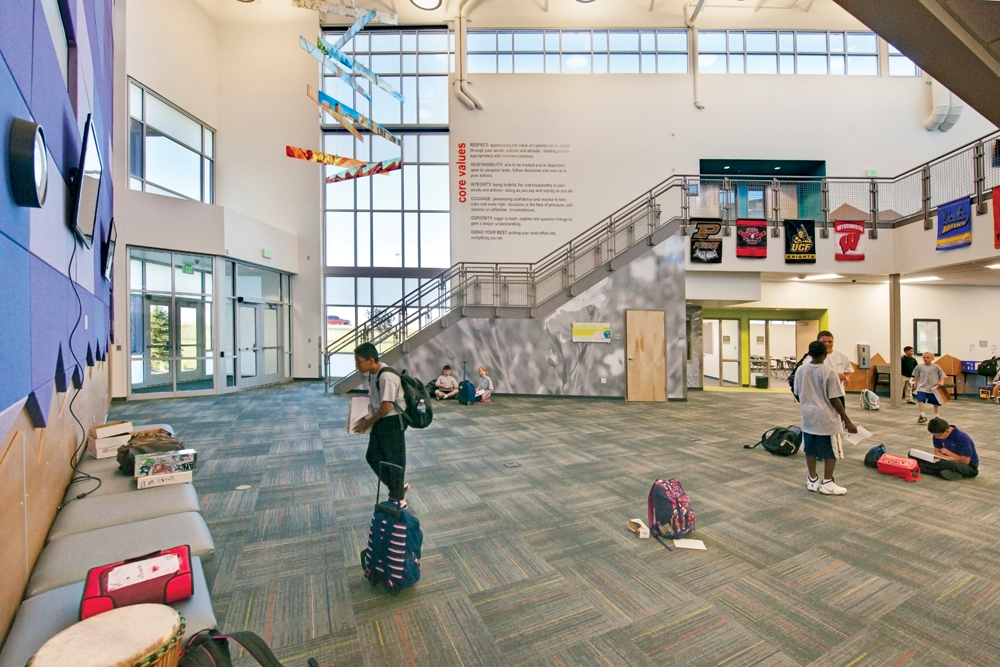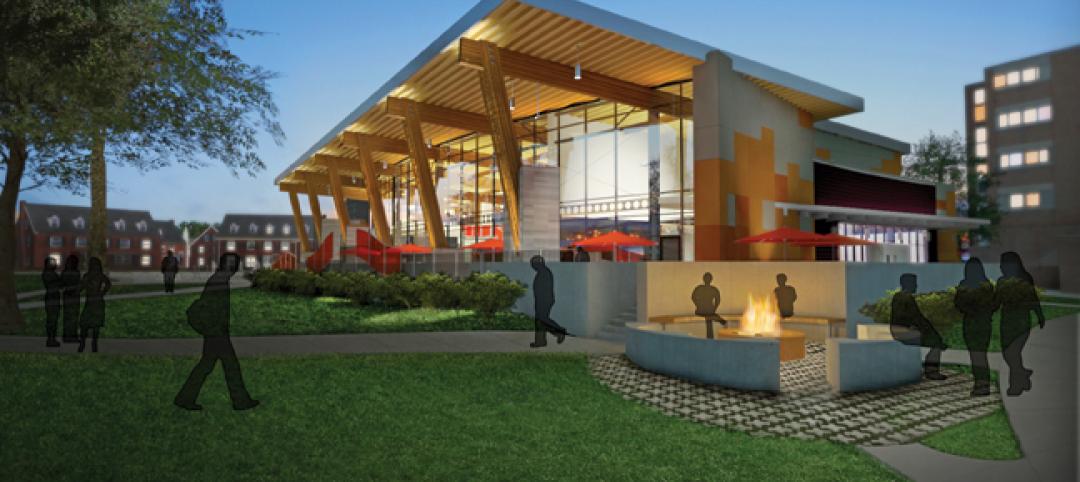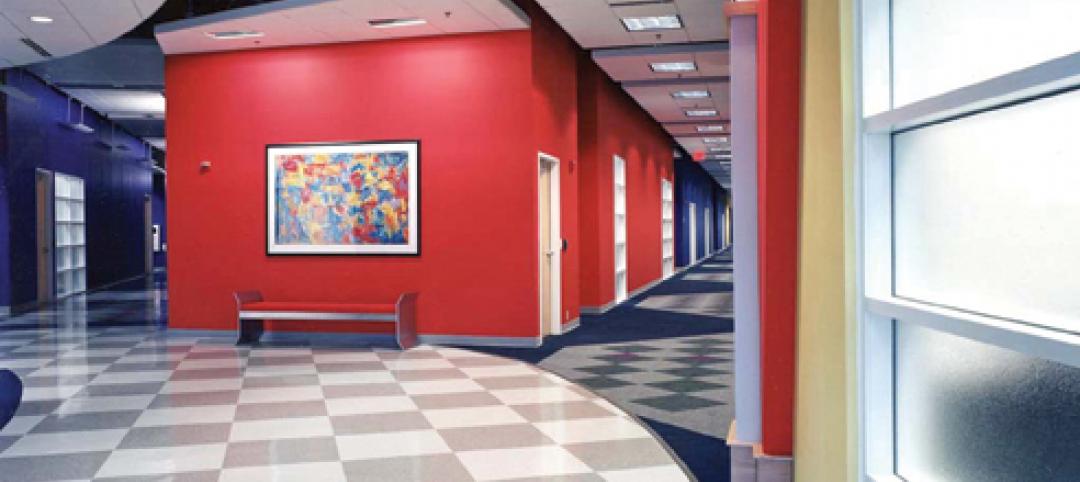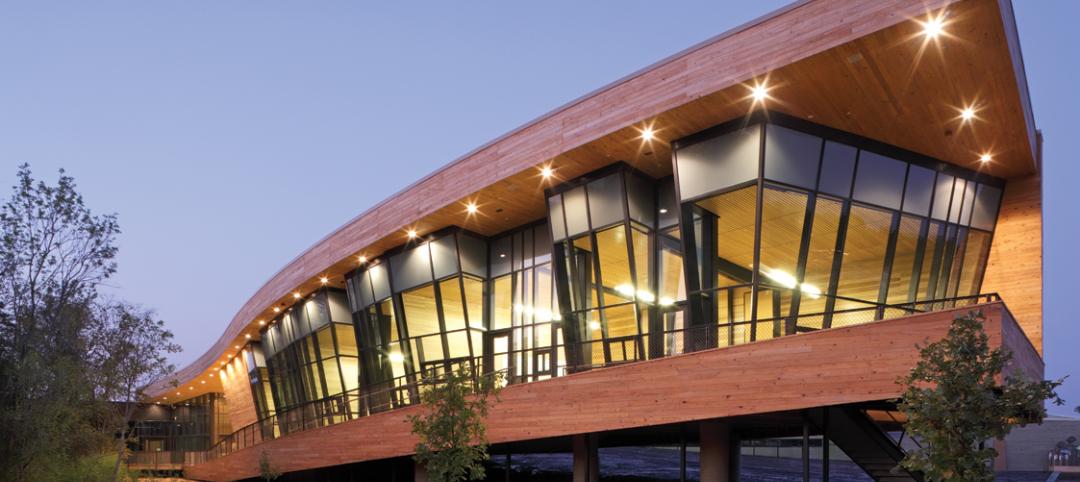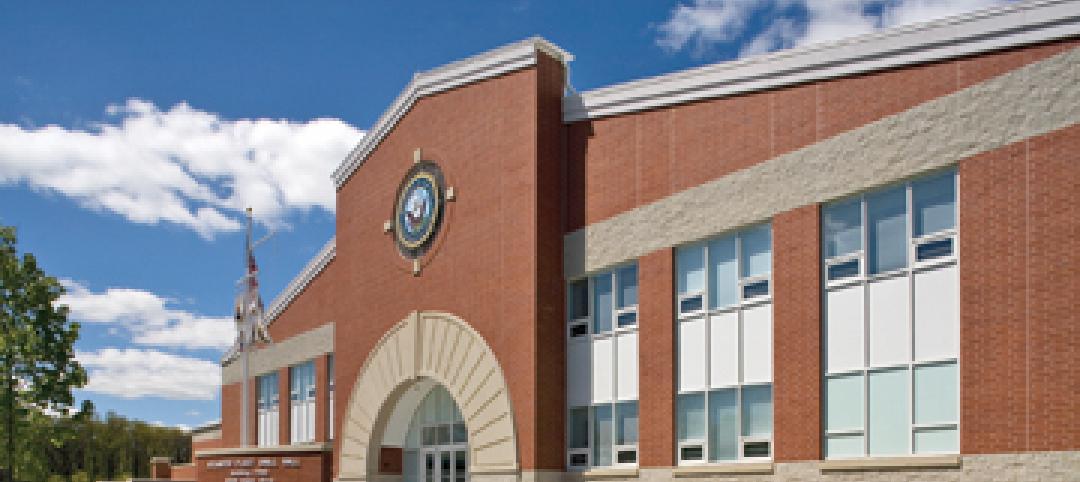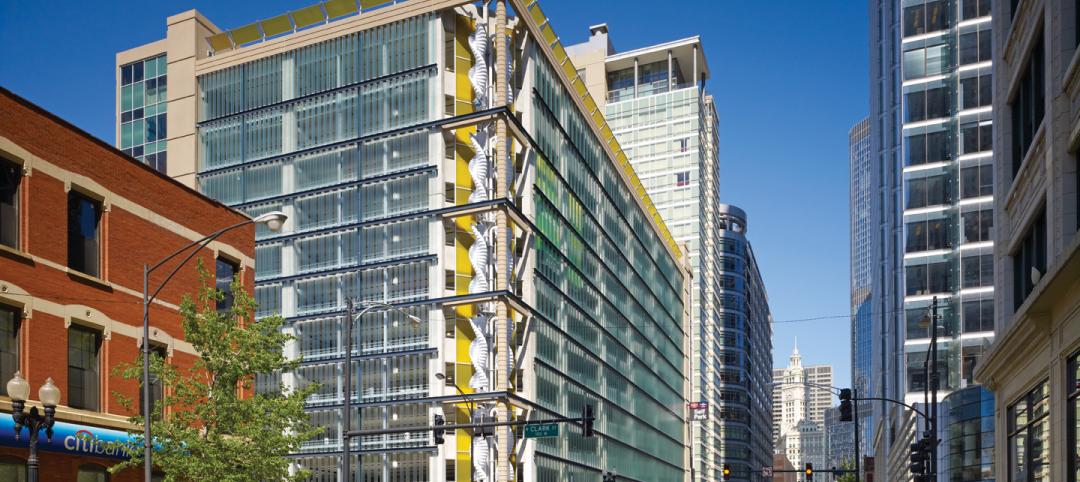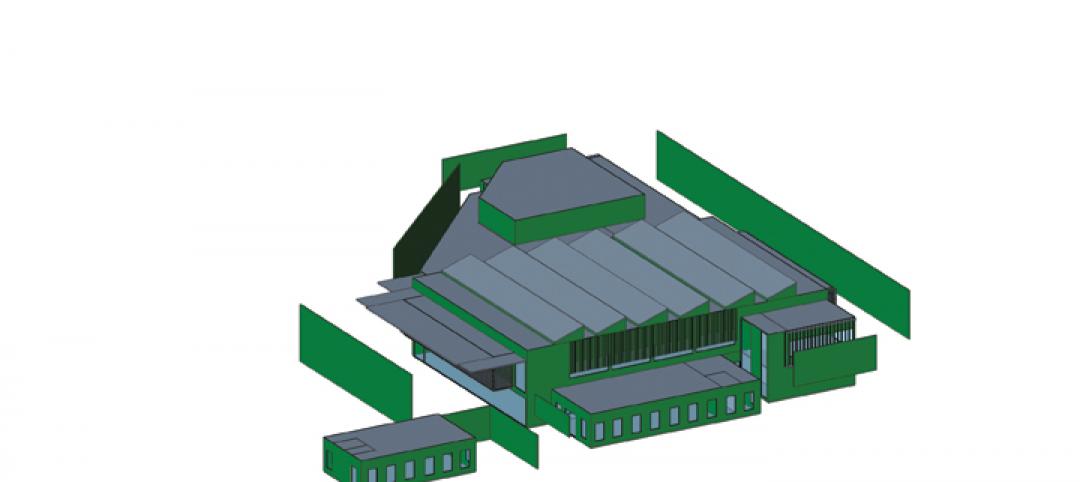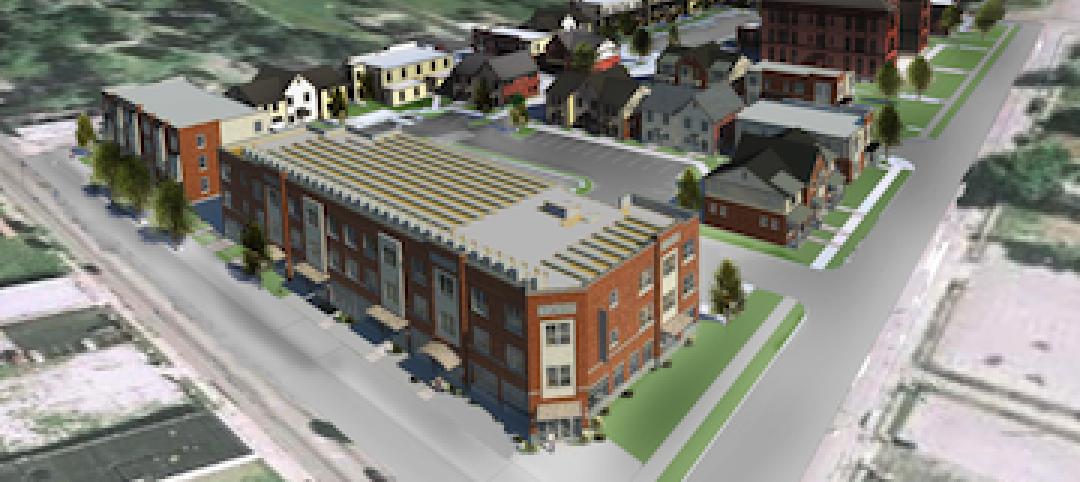As school construction budgets tighten, administrators and boards in the nation’s 13,000 public school districts are constantly on the lookout for hard evidence to justify the perceived—if not always actual—cost premiums associated with the decision to go green.
Help comes in the form of a study conducted by design firm DLR Group and the Institute for the Built Environment at Colorado State University, “Linking Performance & Experience: An Analysis of Green Schools.”
The research team started with the U.S. Green Building Council’s definition of a green school: “a school that creates a healthy environment that is conducive to learning while saving energy, resources, and money.”
Measuring energy use, resources, and money is fairly straightforward. Measuring student health and performance is another story. Aggregated test scores, absentee statistics, and graduation rates are all essentially public information, but jumping the legal and administrative hurdles of gathering data on student health and “soft” performance factors like “behavior” can be daunting.
“Everybody wants this hard data research, but we’re dealing with public school systems and there are privacy issues,” not to mention the cost of gathering such data, says Andy Ernsting, a Principal at DLR.
CREATING THE RESEARCH METHODOLOGY
In the DLR/IBE study, the researchers surveyed building occupants at 10 sites with a total of 12 green schools, completing interviews with facility managers on all 10 campuses. Fifty-three teachers, staff, and administrators from these schools completed an online questionnaire that asked how they perceived the impacts of sustainable design on student performance.
The results were overwhelmingly positive: 71% of respondents said they saw a positive effect on student achievement, 87% reported a positive impact on student health, 71% perceived a positive effect on student behavior, and 85% said they saw evidence of personal improvements in health and productivity.

The design of Panther Lake Elementary School in Federal Way, Wash., uses daylighting and transparency to connect the building to the surrounding wetlands, forests, and fields. The 45,000-sf replacement school meets Washington Sustainable Schools Program requirements, the first of four such schools for Federal Way School District No. 210. DLR Group provided architecture, engineering, and planning services. The Building Team also included: Swenson Say Faget (SE), OTAK (CE and survey), Karen Kiest Landscape Architects, BRC Acoustics, JLR Design Group (food service consultant), and Babbit Neuman Construction Company (contractor). Photo: courtesy DLR Group
“I believe that a bright and comfortable work environment is healthier and makes people (adults and students alike) want to work more efficiently,” said one respondent.
“Sometimes perception is reality, and if people believe they’re in a higher-quality environment, they just perform better,” says Jim French, DLR Group Senior Principal and K-12 Education Studio National Leader. “I think some subjectivity of higher quality of comfort is not a bad thing.”
HOT TO IDENTIFY STUDENT PERFORMANCE IMPROVEMENTS
Brian Dunbar, the IBE’s Executive Director and Professor Emeritus at Colorado State, says that it may be possible to draw a more direct correlation between the sustainable characteristics of a school’s architecture and better student performance. ”We’re coming to the place of saying, OK, the test scores are better here, let’s look at why.”
Dunbar says the definition of a healthy school starts with indoor environmental quality. Healthy air, light quality (both daylight and electrical), thermal comfort, and acoustics are all elements of a healthy school, he says.
“With some of our recent research, we’ve shown that with good air quality and thermal comfort, kids are actually missing fewer days of school,” says DLR’s French. He says statistics of that kind can be powerful with school districts, even those that feel sustainable design comes with higher upfront costs. “If the research shows that students will stay in their seats because they’re not sick, that’s a big selling point,” he says.
Seventy-one percent of respondents saw evidence of an improvement in student behavior, notably less violence, vandalism, and bullying. While there is no hard evidence to prove the case, Dunbar believes environmental factors can have an effect on a student’s mood, which can impact behavior. “We’re talking about a calmer place, a cleaner, more organized space,” he says.

HMC Architects’ ArchLab has developed a program in coordination with Santa Monica–Malibu Unified School District and McKinley Elementary School to educate elementary school students about their role in sustainable living. The team also trained Santiago High School students on how to teach the lessons to elementary school students, and is publishing a children’s book based on the workshops. Photo: courtesy HMC Architects
French notes the importance of student involvement in the development of a green school, particularly for older students. “You’ve got to involve the students in the vision of the school,” he says. “They’ve got to believe they’re part of it.”
“The students are proud of their building, which has all but eliminated any school vandalism,” said one survey respondent. “There is a level of pride in being a student at Pioneer [a middle school in the study] and the students’ behavior is a reflection of that pride in their building.”
Students should also take part in the day-to-day operations of the school, from monitoring energy use via interactive screens, to food and waste recycling. “We call this ‘building as curriculum,’” says Ernsting. “Make the operation of the building part of the student experience.”
French believes administrators are becoming more open to the idea of green schools. “As districts become more sophisticated, green schools are going to be mandatory,” he says. “School districts aren’t getting any more money from the public, so it’s critical that green building costs not go up. We have a responsibility as architects, engineers, and contractors to figure out how to get these buildings done as inexpensively as we can.”

Wight & Company has proposed an “edible forest” on the campus of Joliet (Ill.) Central High School as part of a kitchen, cafeteria, and galleria addition currently under way. The proposed garden would use a form of permaculture based on a woodland ecosystem. If implemented, the sustainable ecosystem will include nitrogen fixers, insect repellents, and trees, shrubs, and ground covers to teach students about sustainable food production. Photo: Wight & Company
Related Stories
| Nov 3, 2010
Dining center cooks up LEED Platinum rating
Students at Bowling Green State University in Ohio will be eating in a new LEED Platinum multiuse dining center next fall. The 30,000-sf McDonald Dining Center will have a 700-seat main dining room, a quick-service restaurant, retail space, and multiple areas for students to gather inside and out, including a fire pit and several patios—one of them on the rooftop.
| Nov 2, 2010
11 Tips for Breathing New Life into Old Office Spaces
A slowdown in new construction has firms focusing on office reconstruction and interior renovations. Three experts from Hixson Architecture Engineering Interiors offer 11 tips for office renovation success. Tip #1: Check the landscaping.
| Nov 2, 2010
Cypress Siding Helps Nature Center Look its Part
The Trinity River Audubon Center, which sits within a 6,000-acre forest just outside Dallas, utilizes sustainable materials that help the $12.5 million nature center fit its wooded setting and put it on a path to earning LEED Gold.
| Nov 2, 2010
A Look Back at the Navy’s First LEED Gold
Building Design+Construction takes a retrospective tour of a pace-setting LEED project.
| Nov 2, 2010
Wind Power, Windy City-style
Building-integrated wind turbines lend a futuristic look to a parking structure in Chicago’s trendy River North neighborhood. Only time will tell how much power the wind devices will generate.
| Nov 2, 2010
Energy Analysis No Longer a Luxury
Back in the halcyon days of 2006, energy analysis of building design and performance was a luxury. Sure, many forward-thinking AEC firms ran their designs through services such as Autodesk’s Green Building Studio and IES’s Virtual Environment, and some facility managers used Honeywell’s Energy Manager and other monitoring software. Today, however, knowing exactly how much energy your building will produce and use is survival of the fittest as energy costs and green design requirements demand precision.
| Nov 2, 2010
Yudelson: ‘If It Doesn’t Perform, It Can’t Be Green’
Jerry Yudelson, prolific author and veteran green building expert, challenges Building Teams to think big when it comes to controlling energy use and reducing carbon emissions in buildings.
| Nov 2, 2010
Historic changes to commercial building energy codes drive energy efficiency, emissions reductions
Revisions to the commercial section of the 2012 International Energy Conservation Code (IECC) represent the largest single-step efficiency increase in the history of the national, model energy. The changes mean that new and renovated buildings constructed in jurisdictions that follow the 2012 IECC will use 30% less energy than those built to current standards.
| Nov 1, 2010
Sustainable, mixed-income housing to revitalize community
The $41 million Arlington Grove mixed-use development in St. Louis is viewed as a major step in revitalizing the community. Developed by McCormack Baron Salazar with KAI Design & Build (architect, MEP, GC), the project will add 112 new and renovated mixed-income rental units (market rate, low-income, and public housing) totaling 162,000 sf, plus 5,000 sf of commercial/retail space.
| Nov 1, 2010
John Pearce: First thing I tell designers: Do your homework!
John Pearce, FAIA, University Architect at Duke University, Durham, N.C., tells BD+C’s Robert Cassidy about the school’s construction plans and sustainability efforts, how to land work at Duke, and why he’s proceeding with caution when it comes to BIM.


